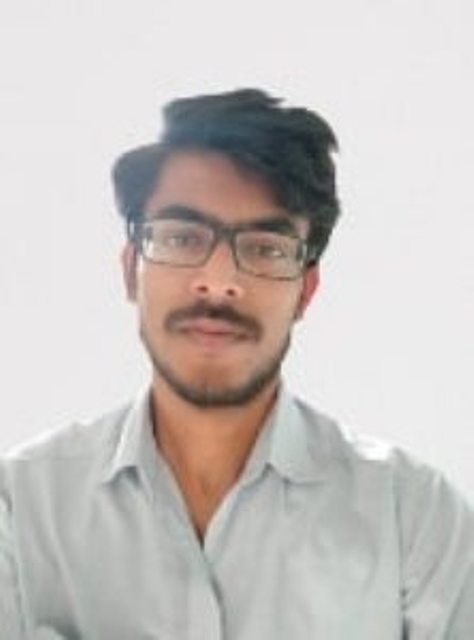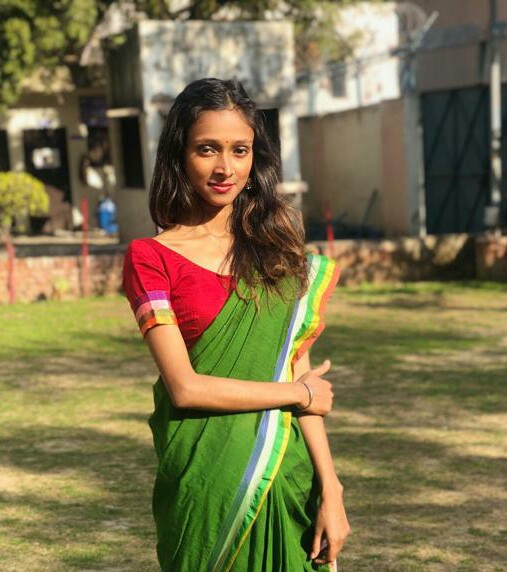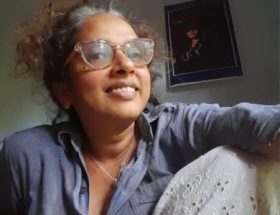Sudarshan Kasbe
 In 2017 two dalit students pursuing higher education committed suicides in premier institutes of India which really shook the nation. These suicides cannot be looked at as independent events but are subject to critical scrutiny by researchers in the wake of the hierarchical structure present in Indian education system. After 73 years of independence there is still a huge population that is not able to access education. Those who get enrolled in various campuses and courses struggle a lot and still continue to suffer from injustice at different levels. They have been subjected to oppression and emotional turmoil from their colleagues and professors. This article is specifically talking about a few cases that happened in India and how it impacted on overall youth across India.
In 2017 two dalit students pursuing higher education committed suicides in premier institutes of India which really shook the nation. These suicides cannot be looked at as independent events but are subject to critical scrutiny by researchers in the wake of the hierarchical structure present in Indian education system. After 73 years of independence there is still a huge population that is not able to access education. Those who get enrolled in various campuses and courses struggle a lot and still continue to suffer from injustice at different levels. They have been subjected to oppression and emotional turmoil from their colleagues and professors. This article is specifically talking about a few cases that happened in India and how it impacted on overall youth across India.
Introduction
As per the 2011 census, India had a population of 1.25 billion (accounting for 17.8 % of global population) with 423 million youths in the 15-34 years age group (accounting for 6.04% of global population). This growth is projected to continue and by 2030, India will have the highest population and youth population in the world.1 A country with such a large youth potential has been in the quest and struggle for becoming a developed nation, many barriers contribute to slower growth and development. Many social evils which are acknowledged and thrown away by western societies are practiced in India with pride.
India has an enthusiastic, innovative, vibrant and dynamic youth population but it also has a large population of unemployed, broken and angry youth. When a research scholar named Muthukrishan committed suicide in Jawaharlal Nehru University, which is one of the oldest premier institutes in India, it shocked the academic fraternity as well as the entire country. It wasn‘t a single incident but a series of suicides happening in universities in the last few years. It wasn‘t only a battle of a single person or single community but assertion of identity by the youth of India for reclaiming their equal status in the university.
In India higher education is still a distant dream for a large population of the society. Out of the total population enrolled in higher education, Scheduled Caste students account for 14.89% whereas Schedule Tribe students account for only 5.53%. Dalit students formed 11% of the undergraduate and postgraduate enrollment in 2018-19. They made up fewer than 10% of PhD students, but 16% of M.Phil students. When it came to non-degree certification, dalit students made up 14% of diploma-holders and 13% of certificate-holders.2 Now, with such small representation in college or higher education institution, student struggles get intensified with each passing day of college due to the immense cultural power that an academic aristocracy displays in day-to-day life of students coming from marginalized sections.
There are many cases reported on campus discrimination in premier institutes of India. Many institutes have failed to secure the 22.5 % (15%+ 7.5%) of SC/ST enrollments which is the mandated quota even though as per India‘s census 2011 scheduled castes are 16.6 percent and scheduled tribes are 8.6 percent of total population. The situation inside campuses as well as outside campuses is not very different where the feeling of alienation is there from a very long time. “Dalits are feeling alienated and betrayed, they will go against the BJP,” said Ghanshyam Shah, an author and retired professor at Jawaharlal Nehru University who studies the dalit community. “They are in a position that no party can afford to ignore them.” 3
They have started to assert themselves at various spaces across country in various forms starting from wearing a T-shirt which says “It‘s a dalit thing, you won‘t Understand” to breaking many stereotypes of being weak and broken by forming a Bhim Army (youth-led group of dalit youth).
Many dalits are active in ongoing movements and dalit youth participation in those movements were recognized but not to the extent where the movement is entirely driven by them. But following the suicides of Rohith Vemula a dalit male Ph.D Student in University of Hyderabad, Muthukrishna, a dalit male Ph.D student in Jawaharlal Nehru university, Kotal, an Adivasi woman student who studied in Vidyasagar university, Dr. Payal Tadvi a Mumbai based medical student and so on, youth is taking charge. They were mute spectators or occasional participators for a long time but after these cases it‘s all changed. It is as if their dead bodies, their suicide letters, their parent‘s trauma and inconsolable grief, the financial–material breakdown of their households that were dependent on these students education, and the insensitive circulation of these images via social media, were needed for the recognition of the inequality of the society we lived in. Their death enabled many dalit students to prove that discrimination is happening and that they are being marginalized in spaces which are supposed to be modern and enlightened.
Review of Contemporary dalit politics
In the 21st century when the world is changing rapidly with technological advancement and connecting all the people through the internet, one can consider a world as one family. But discrimination based on class, caste, creed, language, race, region etc. is still prevalent in many parts of the world. Specifically in the Indian context caste plays a divisive role across rural and urban areas. Caste based discrimination has worked in many forms for centuries in the Indian subcontinent and there have been many movements against it but it‘s still continuing. There are daily instances of atrocities happening across the country:a dalit man shot for fetching water from government well, a dalit youth burned alive for love affair with upper caste girl, 7 dalit family members assaulted for skinning dead cow accusing cow slaughter, a dalit man whipped 100 times for asking for a raise in salary, a dalit man killed by villagers after he bought a horse and thousands of such news coming out every day.
As in the outside world there are many instances of it occurring on campus. Sarita, a student at the Ambedkar University in Mhow, said she felt the time of discrimination was over until she began her academic research:“I did my fieldwork and across villages in MP’s Ratlam found persistent untouchability” (Christry, 2018). All these incidents many a times are not visible and not captured in existing data sets, for example having separate plates for dalits at wedding, discussing who is coming from quota and whispering about it, refusing to rent out a house if tenant found to be a dalit, not allowing daughter or son to marry a ‘lower’ caste person, ganging up against a dalit student in university and hostel, using caste based slangs and caste based ragging. All of these are newer forms of discrimination which are difficult to prove. Even the pioneer of reservation system and staunch opposer of caste hierarchy Dr. Bhimrao Ambedkar has not been spared by upper caste douche bags. There are many platforms on social media created with the malicious intention of spreading hatred against Ambedkar and dalits.
A few kilometers away from Dr. Ambedkar’s birthplace, in Mhow, Madhya Pradesh there exist two crematoriums for dalits and non dalits in Harsaula village. Near the crematorium a Dharamshala exists which proudly announces itself to be that of ‘Savarna Samaj‘. So, even in the 21st century caste is alive and kicking in India.
Institutionalizing inequality
This is an age old practice but has been recognized recently with more on-campus suicide cases which speaks about denial of quality education to dalits and is more worrisome for the young generation of dalits. Caste based discrimination in Indian universities has been an open secret for many years. There are examples where dalits students have been treated with extreme prejudice which led to social exclusion and total ignorance towards the plightof the marginalized. Continuous taunting, different treatment, exclusionary behavior and indifference of administration have forced many to commit suicide. Despite measures being in place, the administration has done very little to comfort the marginalized students in university spaces.
Recently many cases of suicide came to light which created awareness about such cases but there are many cases that are unreported and far away from headlines, many cases of direct and indirect systemic discrimination that have suffocated lives of hundred and thousand of dalit students and still continue to do so. On-campus discrimination being exclusionary it is very subtle in nature like from subtle denial of entitlements to seemingly natural practices which adversely affect dalits students in particular. In 2013, 28 professors from universities in Hyderabad impleaded themselves during a writ petition associated with caste discrimination before the Andhra Pradesh Supreme Court. Their letter noted, “Students from marginalized groups are also troubled by lack of clarity and sometimes contradictions within the examination and administrative procedures.” 4
Discretionary rules which do not consider the struggles and difficulties of marginalized students are biased against them. It has affected students and forces them to belittle themselves. “don‘t waste my time”, “go away”, “come tomorrow”, “I am busy now”, “your presence irritates me” etc. are some frequently used dialogues that are routine in university spaces. It’s very difficult to prove if any lecturer makes a student invisible, not providing enough time, not letting them speak, being discouraging in a way, not letting them use instruments or labs, limiting access to himself and so on.
There is a huge difference in representation starting from self-employment to topmost bureaucracy. Scheduled castes and scheduled tribes are less than 10% of central higher bureaucracy 5 and they are 0.7 % of the self-employed population.6 This institutionalized representation affects policymaking and policy implementation in favor of dalits. The numbers are similar in other sectors such as News, films television, owning a business etc.
 Table 1. Representation of SC/ST/OBC in Top most bureaucracy
Table 1. Representation of SC/ST/OBC in Top most bureaucracy
Source: Data retrieved from Press Information Bureau of India.8
In 2007 a committee was created by the central government specifically to investigate allegations of harassment of scheduled caste and scheduled tribes students in All India Institute of Medical Sciences (AIIMS), New Delhi, which is considereda premier institute in the country. The committee was headed by Sukhdeo Thorat, former chair of the University Grants Commission of India, and surveyed half the SC/ST students at AIIMS and they found rampant discrimination against these students.
There is informal segregation within AIIMS hostels owing to harassment, abuse, and violence by dominant caste students on dalits students forcing them to shift to specified parts of the hostel building. Students from Scheduled Castes and Scheduled tribes faced social isolation in public domains such as dining halls, sports grounds, and cultural events organized on campus. The committee also observed the students’ statements which talked about teachers’ behavior towards these students which was described as avoidance, contempt, non-cooperation, discouragement and differential treatment.
An investigative study conducted by The National Campaign on dalits Human Rights (NCDHR) at IIT Roorkee where 73 first-year students B.Tech, IMT and M. Sc course were expelled, out of which three quarters were SC/ST. In their report NCDHR observed a few instances shared by students in which teachers asked the students about their category or entrance examination ranks. 84% of SC/ST students surveyed said that examiners had asked them about their caste directly or indirectly during evaluations. The report noted that they found a scarcity of support from institutions to support the students coming from diverse backgrounds, lack of infrastructure addressing their needs, remedial programs, English support classes, summer coaching classes and so on. They have noted the dysfunctional status of the SC/ST Cell of which students are not even aware.
Admission process biased against marginalized students
The discrimination not only takes place inside or outside the campus but also in transitioning from outside to inside, which means during the admission process. Access to education is crucial for marginalized youth as it can shape his/her life and give them a real shot at climbing up the socio-economic ladder. Denial of access or biased admission process puts the dalit youth in a disadvantaged position which usually takes that person down the hill. Many committees have observed that the admission process in Indian universities while seemingly neutral is negatively impacting dalits students owing to English fluency issues and during viva voce (oral interviews).
In 2016, when there was an outcry over the discriminatory admission process followed by Jawaharlal Nehru University, a committee set up by the Ministry of Human Resource Development on the welfare of Scheduled Castes and Scheduled Tribes examined the reservation policy of JNU and noted: “while SC/ST Students clear written examination with flying colors they often fail in interviews, which is a case of latent caste discrimination on part of college authorities and teachers.”9
In the same year, a committee led by Professor Abdul Nafey analyzed the admission data of JNU for the past three years and found that a consistent pattern of difference in written and viva marks across all social categories which were indicative of caste-based discrimination. Nafey committee recommended reducing the weightage of viva marks from 30% to 15% during admission and also for the university to review this system once every three years. Earlier the UGC had issued a notification basing admission totally on interviews and making written exams as qualifying exams. This move led to mass protests across various universities as it would have systematically given scope for discrimination. Muthukrishan had written extensively against this move of the UGC before committing suicide.
Findings
Now with the active participation from youth and advanced technology, dalit youth are fighting their fight more fiercely. They have put technology to good use. Students claimed that “Through social media, we reached Rohith. And Rohith reached us even after his death. Today, if there’s a caste atrocity in Rajasthan, a dalit in Lucknow can visit the Ambedkar statue, and protest with a banner and a flag.” (Pathak, 2016) dalit students feel empowered with access to immediate information, and have tools to organize. They place their struggle within the wider battle of social justice “We have to unite backwards, Muslims, and even the poor of upper castes. They have to shed their superiority and that we got to shed our inferiority”. The economic shift has also opened doors. Chandrabhan Prasad, a key dalit thinker, has argued that the English language, urbanization, and capitalism will decrease the salience of caste. A brand new generation of dalit entrepreneurs has arisen. Others within the movement see it as positive; on the other hand, they question the exclusionary and unrepresentative nature of the private sector. But, there’s a brand new dalit movement in the making – aware, assertive, self-critical, connected, inclusive, and beyond party politics.
Discussion
“For some people, life itself may be a curse. My birth is my casualty. I can never get over my childhood loneliness. I‘m not hurt at this moment. Not sad, just empty. That‘s pathetic. That‘s why I‘m doing this.” Rohith Vemula10
The caste system isn’t only anti-individual, but it’s also deeply anti-social. The psychological impact of the caste system on the lower classes within the caste system is the mutilation of their human-hood and destruction of their human personality. That‘s why the full reclamation of humanity in the form of Dr Babasaheb Ambedkar liberates them from the forced rape of their person by the inhuman caste system. Ancient Indian scriptures divide Hindus into four varnas/four main categories which are then broken down into almost 3000 Caste and 25000 sub casts with dalits and mahadalits being at the bottom most of this caste pyramid. This bottom stratum also includes minority groups such as Christians, Muslims, and a converted Buddhist population. The Hindu population at the bottom known as dalits is officially recognized as Scheduled Caste and they were assigned most demeaning jobs such as cleaning public toilets, skinning dead animals for their hides, providing services and so on. Many generations have been doing all these works without any access to justice or alternative solutions. After independence, the Indian constitution has banned any form of caste-based discrimination and made it a punishable offence. The main author of the Indian constitution Dr. Babasaheb Ambedkar who himself was dalit made provisions for reservation and basic human rights which were not accounted for earlier. The Indian Constitution secures basic human rights to dalits which they have been denied for centuries, and their struggle continues even today. After 73 years of independence, they have been denied basic rights such as attending regular school, accessing public water supplies and staging marriage processions.
With the current global connectedness, new information is pouring from different platforms and dalits youth specifically are being aware of their rights. They are defying the caste system and asserting their voices. They are embracing their identity. They are coming on to the streets to demand better treatment driven by rising education levels, greater entrepreneurship skills and assertion within and through their political clout.
The battle for liberation and reclamation of the human personality that began with the good beings who sought to destroy the inhuman structure of the caste evolved into creating great people like Rohith Vemula. A discussion and pool of opportunity with huge potential to bring social change has been initiated with these acts. Many people are disgusted with the inhuman treatment given to dalits and they are committed to change it.
Such energy and so much commitment is rare in world history. With dalits spread across the country who are aware of surroundings and active on social media, the boldness, the knowledge, the confidence, and therefore the ability to speak out among Ambedkarites are evident. If we keep up the same pace and commitment to the cause, the outreach of dalits convincing people against atrocious activities will go a long way. dalits youth have reached Indian universities as well as foreign universities and they have become the voice of the marginalized. They are asserting themselves and this will create a chain of change-makers who will work towards societal progress and enlightenment among all. “There is unquestionably a growing assertiveness among dalits in India that I expect will gather strength in the years to come,” said Milan Vaishnav, director of the South Asia program at the Carnegie Endowment for International Peace.
Conclusion
In my opinion, in the last 73 years that India has been independent, we have spent all our time quarrelling. According to the 2011 census, the ruling class or caste (Savarnas) may be small in numbers (less than 15 percent of Indian population) but they are no ordinary people. They not only control the country’s entire property and privileges but they also control the brains of the rest of 85% of the population. They own & run the mass media, write books, produce films & serials, manage educational institutions, hospitals, industries etc. majority of them are educated and acquiring key positions across the systemic hierarchy of administration and education. In sum, they are the ones who set values for the general mass.
Dalits have to pull up our socks and get ready for a big battle that‘s approaching, or else the days are not too far when we see history repeating itself with the Scheduled Castes and Scheduled Tribes again suffering the worst form of social discrimination under the System. There is no college, no university, no educational institute, no company, and no institution of the government where the people are not asserting their humanity and what belongs to them: their dignity and their self-respect. It is also increasingly evident that these youths are ready to break any regional, linguistic, caste, and gender barriers. The frozen barriers of the castes are thawing to produce the harmonious river of transformation. Once that social power is built by breaking barriers between the people, the caste system will see its death. The unity and solidarity which comes through the feeling of community and feeling of the sense of belonging to each other in this great stride against the inhuman caste system is the ultimate enemy of the caste system. Caste divides, a community unites.
This is what Rohith taught us, to think beyond and live beyond the reductionist caste structures, inhuman systems of segregation that try to confine our universal unique existence to serve the interests of a few. In thinking like him, in being like him, we realize that we belong to the universe, and not to any caste, creed, religion, and place. And for that one needs to understand it as a caste war between the upper caste haves and SC/ST/OBC & minority have-nots. We welcome this war. Because it is only through this caste war that caste can be destroyed.
The data used for writing is purely secondary and from the author’s lived experience. The news articles referenced for the study are from a specific time period of 2016 to 2018. This paper also analyzes government data from the perspective of understanding dalit representation specifically. Some statements may seem to be biased as the author himself belongs to the dalit community and has been subjected to caste-based discrimination.
~
Notes
1. Data derived from youth of India report 2017, Government of India.
2. Data derived from Source: All India Survey on Higher Education (2018-19).
3. https://economictimes.indiatimes.com/news/politics-and-nation/young-angry-and-untouchable-indias-low-caste-threat-to-modi/articleshow/67589578.cms
4. The news article published by BBC Asia/India on 19 January, 2016.
5. http://www.thehindubusinessline.com/news/scs-sts-form-less-that-10-of-central-higher-bureaucracy-says-personnel-dept/article6636967.ece
6. India Labour and employment report, 2014.
7. Ref. Rana Mulchand, Reservations in India.
8. http://pib.nic.in/newsite/PrintRelease.aspx?relid=132395
9. Report submitted to MHRD on October 16, 2016.
10. Excerpt from suicide note written by Rohith Vemula.
References
➢ Development, M. O. (2019). All India survey on higher education 2018-19. New Delhi: Ministry of Human Resource Development .
➢ Dutta, M. J. (2017, November 3). Harassment, Silences and Indian Academia. Retrieved July 25, 2020, from The Wire: https://thewire.in/gender/sexual-harassment-indian-academia
➢ Implementation, M. o. (2017). Youth in india 2017. New Delhi: Ministry of Statistics and Programme Implementation.
➢ Ameeraudheen, T. (2017, Jan 17). Assault on dalit youth in Kerala sparks a debate on the Left’s double standards. Retrieved March 8, 2018, from The Scroll: https://scroll.in/article/826854/assault-on-dalit-youth-in-kerala-sparks-a-debate-on-the-lefts-alleged-double-standards
➢ Christry, P. t. (2018, feb 3). Why Indian Universities Are Places Where Savarnas Get Affection and dalit-Bahujans Experience Distance. Retrieved march 8, 2018, from EPW Engage: https://www.epw.in/engage/article/why-indian-universities-are-places-where-savarnas-get-affection-and-dalit-bahujans
➢ dalit student suicide: Dialogue only way forward on Rohith Vemula issue, says Hyderabad varsity acting vice chancellor. (2016, january 25). Retrieved march 8, 2018, from Fiancial Express: financialexpress.com/india-news/dalit-student-suicide-dialogue-only-way-forward-on-rohith-vemula-issue-says-hyderabad-varsity-acting-vice-chancellor/201552/
➢ Empowerment, M. o. (2018). COMMITTEE ON THE WELFARE OF SCHEDULED CASTES AND SCHEDULED TRIBES (2017-2018) (SIXTEENTH LOK SABHA)FIFTEENTH REPORT ON MINISTRY OF SOCIAL JUSTICE AND EMPOWERMENT. NEW DELHI: LOK SABHA SECRETARIAT.
➢ Farroq, o. (2016, january 16). Rohith Vemula: The student who died for dalit rights. Retrieved march 8, 2018, from BBC india: https://www.bbc.com/news/world-asia-india- 35349790
➢ Paik, s. (2016, MAY 14). Education and Exclusion of dalits: A History of Hurt and Humiliation. Retrieved MARCH 7, 2018, from The Wire: https://thewire.in/education/education-and-exclusion-of-dalits-a-history-of-hurt-and-humiliation
➢ Pathak, V. (2016, January 16). Dalit activism is now a reality across campuses in India. Retrieved march 8, 2018, from The Hindu: https://www.thehindu.com/news/national/dalit-activism-is-now-a-reality-across-campuses-in-India/article14017727.ece
➢ Rajshekhan, V. (2015, september 14). Caste can be destroyed only through caste war: V. T. Rajshekar. Retrieved march 7, 2018, from Round Table India: https://www.roundtableindia.co.in/index.php?Itemid=131&catid=118%3Athought&id=8347%3Ait-is-only-through-caste-war-caste-can-be-destroyed-v-t-rajshekar&option=com_content&view=article/
~~~
Sudarshan Kasbe works on Quality Education and youth Skill Training. He is Founder-Director of Parmi Foundation which advocates for Quality Education, Quality Health and Quality life for Marginalized.










